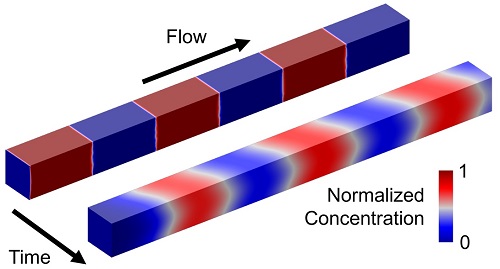Recent events underscore the importance of rapid diagnostic tests for detecting viruses such as the SARS-CoV-2 coronavirus or for screening for cancer biomarkers. To design a successful fluidic diagnostic system, engineers must solve a host of physics-based problems such as fluid flow, chemical transport, interaction, and mixing. Using simulations, engineers not only gain a physics-based understanding of the system but can quickly test and optimize new concepts before prototyping, thereby reducing costs and saving time.
In this webinar, Dr. Andrew Spann demonstrated the use of COMSOL Multiphysics to understand and optimize the performance of different aspects of diagnostic systems, including chemical concentration gradients, chemical carryover, reagent dissolution, and mixing.
The webinar was sponsored by COMSOL and was hosted by AIChE and took place October 28, 2020. Learn more about this event.
